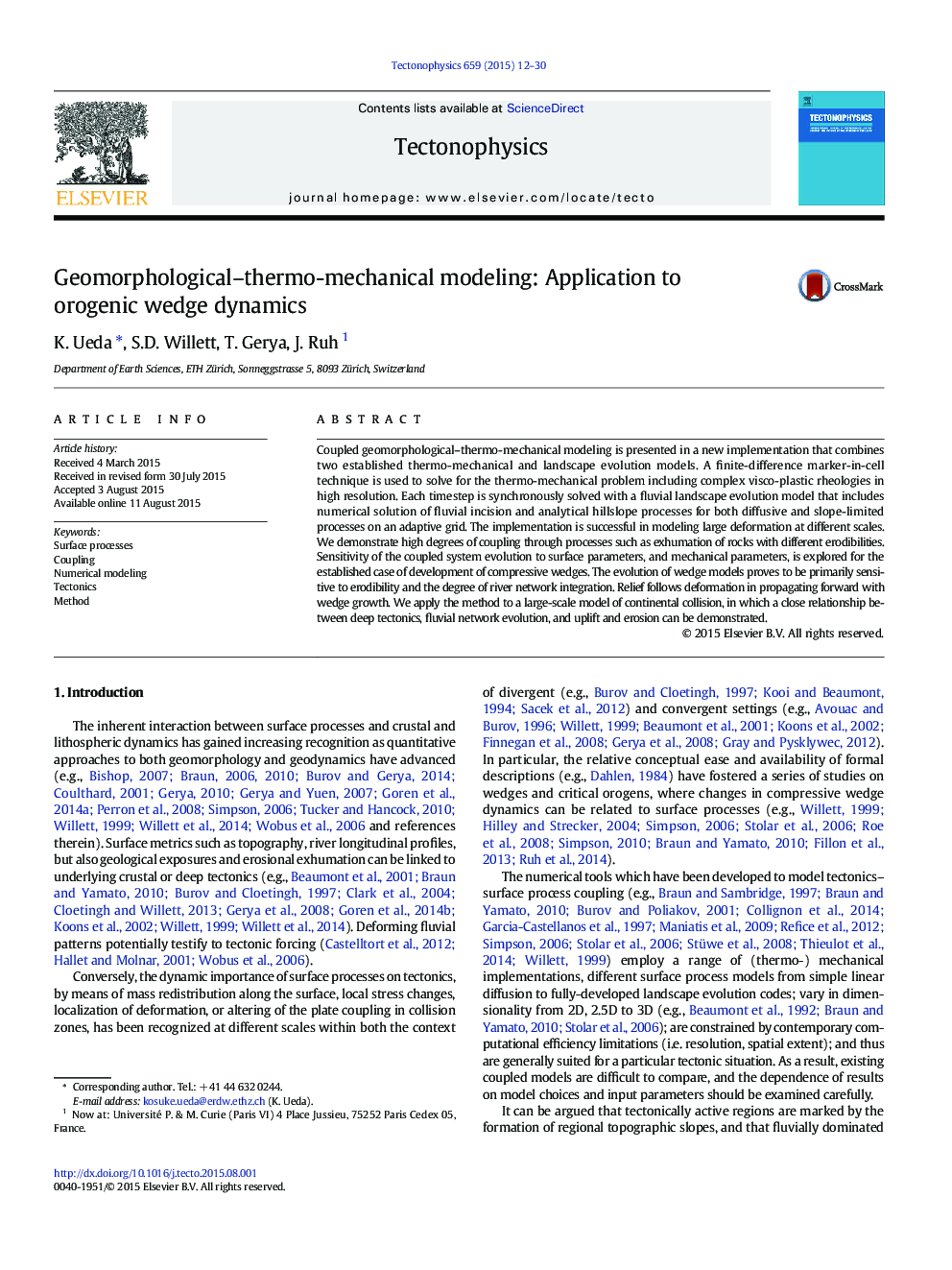| Article ID | Journal | Published Year | Pages | File Type |
|---|---|---|---|---|
| 4691543 | Tectonophysics | 2015 | 19 Pages |
•Modeling approach for coupled tectonic–surface-process interaction•Copes with large amounts of deformation, especially horizontal advection•Orogenic wedge models show strong control of channel erodibility.•Continental collision model shows link between slab dynamics and surface expressions.
Coupled geomorphological–thermo-mechanical modeling is presented in a new implementation that combines two established thermo-mechanical and landscape evolution models. A finite-difference marker-in-cell technique is used to solve for the thermo-mechanical problem including complex visco-plastic rheologies in high resolution. Each timestep is synchronously solved with a fluvial landscape evolution model that includes numerical solution of fluvial incision and analytical hillslope processes for both diffusive and slope-limited processes on an adaptive grid. The implementation is successful in modeling large deformation at different scales. We demonstrate high degrees of coupling through processes such as exhumation of rocks with different erodibilities. Sensitivity of the coupled system evolution to surface parameters, and mechanical parameters, is explored for the established case of development of compressive wedges. The evolution of wedge models proves to be primarily sensitive to erodibility and the degree of river network integration. Relief follows deformation in propagating forward with wedge growth. We apply the method to a large-scale model of continental collision, in which a close relationship between deep tectonics, fluvial network evolution, and uplift and erosion can be demonstrated.
Graphical abstractFigure optionsDownload full-size imageDownload as PowerPoint slide
